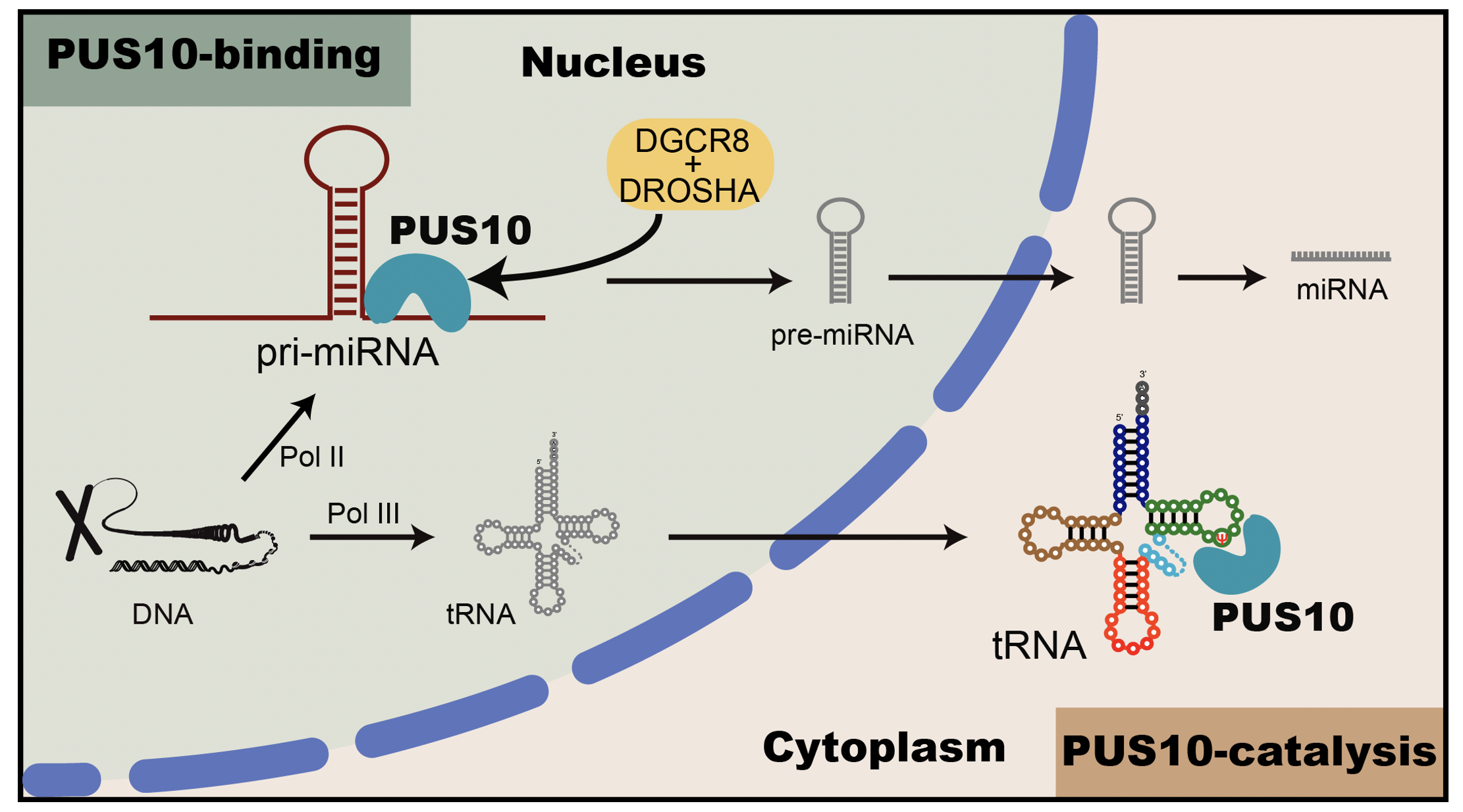Our recent paper in Nature Chemical Biology provides an in-depth study of human PUS10
Our new article named “Differential roles of human PUS10 in miRNA processing and tRNA pseudouridylation” has been published in Nature Chemical Biology (https://www.nature.com/articles/s41589-019-0420-5).
Pseudouridine synthases (PUSs) are responsible for the installation of pseudouridine (Ψ) modification in RNA. However, the activity and function of the PUS enzymes remain largely unexplored. Here, we focus on human PUS10 and find that it co-expresses with the microprocessor (DROSHA-DGCR8 complex). Depletion of PUS10 results in a marked reduction of the expression level of a large number of mature miRNAs and concomitant accumulation of unprocessed pri-miRNAs in multiple human cells. Mechanistically, PUS10 directly binds to pri-miRNAs and interacts with the microprocessor to promote miRNA biogenesis. Unexpectedly, this process is independent of the catalytic activity of PUS10. Additionally, we develop a new sequencing method to profile Ψ in tRNAome and report PUS10-dependent Ψ sites in tRNA. This pseudouridylation activity of PUS10 is restricted to cytoplasm and required for cell growth. Collectively, our findings unveil differential functions of PUS10 in nuclear miRNA processing and cytoplasmic tRNA pseudouridylation.
